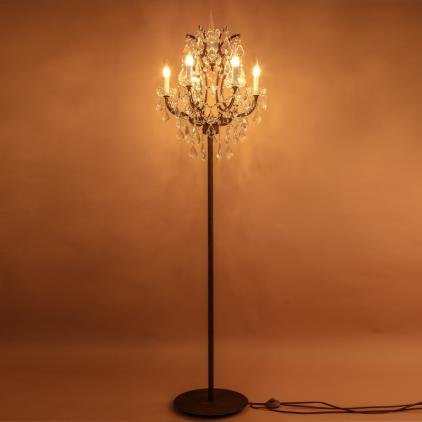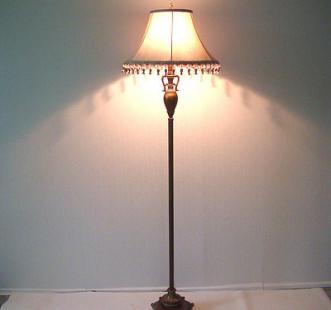1 residential artificial lighting implementation plan 1.1 Lighting standards. The Civil Building Lighting Design Standard GBJ133-90 specifies the illuminance standards for residential buildings. See Table 1.2 for the selection of artificial lighting sources. The light source selected in the house should meet the requirements in the standard. For example, the color rendering index of the light source in the bedroom should be greater than 80, and the correlated color temperature should be less than 3300 (K). 1.3 lamps. 1.3.1 Artificial light source lamps widely used at present are as follows. Incandescent lamps: incandescent lamps are small in size, that is, they are bright and open, and no accessories are required. It is very popular. With the higher requirements on the quality of artificial light environment, transparent incandescent lamps will gradually be replaced by beautifully shaped scrubs. Reduce glare, but because incandescent lamps are not energy efficient, there are some restrictions on where to use them. Tubular fluorescent lamps: tubular fluorescent lamps are widely used and widely used as household light sources because of their high efficiency, long life and low price. At present, the output of tubular fluorescent lamps is about 1/4 of that of incandescent lamps. According to the requirements of green lighting and environmental protection, thin-tube fluorescent lamps will gradually replace ordinary fluorescent lamps. Compact fluorescent lamps: Compact fluorescent lamps are popular in residential buildings due to their small size, high luminous efficiency, flexible lighting, and interior lighting decoration, but their longevity, work reliability, light color consistency, etc. The problem needs to be further improved. 1.3.2 At present, people have the following requirements for lamps in residential buildings: 1.3.2.1 Diversification of lamps. At present, in urban or rural areas, the diversity of lamps is required to be reflected not only in their light distribution, but also in direct light distribution, indirect light distribution or semi-indirect light distribution. The glare is effectively controlled, and it is also characterized by diversification and modernization. , artistic. In terms of styling, people have great choices, and simple fluorescent lamps and ordinary incandescent lamps will be phased out. This is inseparable from the improvement of the level of family decoration. 1.3.2.2 Lamps are energy efficient. Starting from the requirements of energy saving, the efficiency of indoor lamps should not be lower than 70% in the design of light environment, and the efficiency of lamps equipped with grille should not be lower than 55%. Therefore, the reflective material used in the luminaire will have a higher reflectance. 1.3.2.3 The lamp is easy to install and maintain. As the level of air purification and the quality of the light source in the city still needs to be improved, the number of dust cleaning and lamp replacement is correspondingly increased. Therefore, the lamps in the house require cleaning and loading and unloading. 1.3.3 Use of lamps. According to the author of the article “Empirical Research and Policy Recommendations for Residential Light Environment†by the China Lighting Society, 83 illuminating surveys of 14 rooms in Beijing were conducted. The results of the use of lamps are as follows: 1.3.3.1 Installation of lamps from residential buildings Look, the number of lamps is between 12ç› and 46ç›, and the number generally increases with the increase of the building area. Usually between 15 ç› and 22 ,, the average is about 20 。. 1.3.3.2 Among the surveyed households, the usage rate of incandescent lamps is 70%, while energy-saving fluorescent lamps (including compact fluorescent lamps) account for only 30%. 1.3.4 Lighting method of lamps. 1.3.4.1 Direct lighting. Light is emitted through the luminaire, where 90% to 100% of the luminous flux reaches the assumed working surface. This illumination is direct illumination. This kind of illumination has a strong contrast between light and dark, and can create interesting and vivid light and shadow effects, which can highlight the dominant position of the working surface in the whole environment, but due to the high brightness, glare should be prevented. 1.3.4.2 Semi-direct illumination. The semi-direct illumination method is made up of a translucent material to cover the upper part of the light source, 60% to 90% of the light is concentrated to the working surface, and 10 to 40% of the light is diffused by the translucent cover and diffused upward. The light is softer. This type of luminaire is often used for general lighting in lower rooms. Since the diffused light can illuminate the flat top, the height of the top of the room is increased, resulting in a higher sense of space. 1.3.4.3 Indirect lighting. Indirect illumination is the illumination method of indirect light generated by shielding the light source. 90% to 100% of the luminous flux is applied to the working surface through the ceiling or wall reflection, and less than 10% of the light directly illuminates the working surface. There are usually two methods of treatment. One is to install an opaque lampshade on the lower part of the bulb, and the light is reflected on the flat top or other objects to reflect indirect light. One is to set the bulb in the light trough, and the light is reflected from the flat top to the indoor. Indirect light. When this type of illumination is used alone, pay attention to the heavy shadows in the lower part of the opaque lampshade. It is usually used in conjunction with other lighting methods to achieve special artistic effects. 1.3.4.4 Semi-indirect lighting. Semi-indirect illumination, just like semi-direct illumination, puts a translucent lampshade in the lower part of the light source, more than 60% of the light is directed to the flat top, forming an indirect light source, and 10% to 40% of the light is diffused downward through the lampshade. This method can produce a relatively special lighting effect, so that the lower room has a higher feeling. 1.4 Illuminance. According to the author of the article “Empirical Research and Policy Recommendations for Residential Light Environment†by the China Lighting Society, 83 surveys of 14 rooms in Beijing were surveyed. The results are as follows: 1.4.1 Living room: maximum illuminance Emax up to 74lx~ 454lx, generally above 100lx, the residents reflect better on the lighting effect [Note: Illuminance: Illuminance is the luminous flux incident on the unit area, the unit of illumination is lux (lx), 1 (lx) = 1 (lm/m 2) The minimum illumination Emin is 24lx~191lx, and the average illumination Eav of 75lx or less is 60lx~348lx, generally about 75lx~100lx. 1.4.2 master bedroom: maximum illumination Emax can reach 37lx ~ 351lx, generally above 75lx; minimum illumination Emin is 29lx ~ 273lx, generally below 50lx; average illumination Eav is 31lx ~ 315lx, generally around 50lx, a small amount of 75lx or more . 1.4.3 second bedroom: the maximum illumination Emax can reach 32lx ~ 290lx, generally below 75lx, a few is higher than 75lx; the minimum illumination Emin is generally lower than 50lx, a few is higher than 75lx; the average illumination Eav is generally between 50lx ~ 75lx. 1.4.4 Restaurant: Generally around 75lx. 1.4.5 Kitchen: generally around 50lx. 1.4.6 Toilet: Generally around 50lx. 2 residential artificial lighting installation related matters 2.1 When installing electrical lighting devices in masonry structures, pre-embedded hooks, bolts, screws, expansion bolts, nylon plugs or plastic plugs shall be used; wooden wedges are strictly prohibited. When the design is not specified, the above-mentioned fixture load capacity should match the weight of the electric lighting device. 2.2 The wiring of the electrical lighting device shall be firm and the electrical contact shall be good; the non-charged metal parts such as lamps, switches and sockets that need to be grounded or connected to zero shall have a special grounding screw with obvious signs. 2.3 Lamps shall not be directly installed on flammable components; when the high temperature parts of the lamps are close to combustibles, heat insulation and heat dissipation measures shall be taken. 2.4 The insulation of the lamp cap should not be damaged or leaked. 2.5 For a lamp holder with a switch, the switch handle should not have a bare metal part. 2.6 The installation height of the socket shall comply with the design requirements. When there is no design, the following requirements shall be met: a. The height of the socket installed in the same place shall be the same, the height difference shall not be greater than 5mm, and the height difference of the socket of the same type installed side by side shall not be greater than The 1mm.b. floor socket should have a strong and reliable protective cover. 2.7 socket wiring should meet the following requirements: a. single-phase two-hole socket, facing the right or upper hole of the socket and the phase line, the left or lower hole is connected with the zero line; single-phase three-hole socket, face The right hole of the socket is connected to the phase line, and the left hole is connected to the zero line. b. The grounding wire or the zeroing wire of the single-phase three-hole, three-phase four-hole and three-phase five-hole socket should be connected to the upper hole. The ground terminal of the socket should not be directly connected to the neutral terminal. c. Three-phase sockets in the same location must have the same phase of wiring. d. Sockets should not be placed on the circuit for alternate lighting or evacuation lighting. 2.8 The switch should adopt the same series of products, the on/off position of the switch should be consistent, and the operation is flexible and the contact is reliable. 2.9 The position of the switch installation should be easy to operate. The distance between the edge of the switch and the door frame should be 0.15~0.2m; the height of the switch from the ground should be 1.3m; the height of the pull switch should be 2~3m from the ground, and the outlet of the cable should be vertically downward. 2.10 phase line should be controlled by switch; it is strictly forbidden to install bedside switch in residential houses. 3 conclusions. Artificial lighting in residential buildings should do the following: 3.1 The lighting of the house should have a general idea; 3.2 each space in the house should have a corresponding level of illumination; 3.3 energy-saving light sources or lamps should be used in the house; 3.4 residential buildings should adopt reasonable lighting; 4 look forward to the future 4.1 modernization --- New lighting product development and application 4.2 Application--The combination of theory and practice 4.3 Humanization--Design must be people-oriented 4.4 Beautification--New visual experience4.5 Greening--Building the concept of energy saving and environmental protection Review China implements green In the ten years of lighting, the results are very high, but compared with the developed countries, the gap is still very large, and we still need every one of our electrical and technical personnel to continue to work hard to comprehensively promote China's "five-in-one" lighting.
Classical Crystal Floor Light is a kind of floor lamp with Metal and crystal for main material. Floor lamps are
generally placed in the rest area of the living room, and sofa, coffee
table with, on the one hand to meet the needs of the region lighting, on
the one hand the formation of a specific atmosphere. Usually, the floor lamp should not be placed in the area of tall furniture or hinder the activities of the area. These type light used E14/E27/E12/B22 lamp holder. There are many different patterns and designs for customer to choose. We can make light according to customers' requirments.
Classical Crystal Floor Light Classical Crystal Floor Light,Crystal Floor Light,Design Classics Floor Lighting,Home Goods Floor Lamps Zhongshan Laidi Lighting Co.,LTD , http://www.idealightgroup.com
